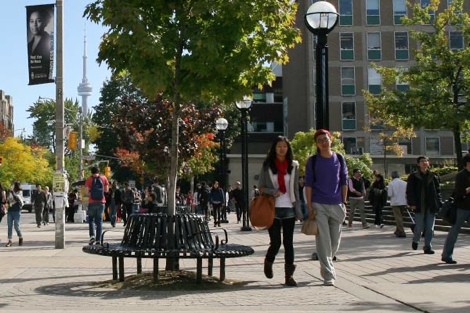If there is one fundamental element that shapes our experience of everyday life — on campus and throughout the city at large — it is walking. Frédéric Gros begins his most recent bestseller, A Philosophy of Walking, with an often forgotten notion: walking is not a sport. To Gros, it is rejuvenation — an escape from the rushes and commitments of daily life. This simple, yet grand hallmark of our bipedalism has been a hot subject of interdisciplinary research — from neurology and psychiatry to philosophy and urban studies.
A longitudinal study published in Neurology demonstrated that walking can have protective effects against brain shrinkage and dementia. According to the results, walking six to nine miles per week seems to protect brain size, thus preserving memory and other cognitive functions that are often impaired in individuals with dementia. It is known that the human brain shrinks as it ages, a phenomenon that could explain the cognitive impairments that affect the elderly. By the end of a 13-year study, it was found that the research participants who had walked the most saw their risk of incurring mental deterioration in late adulthood almost halved.
In order to grasp the sheer importance of this, one needs to think about the imminent tide of dementia — that is, as the baby boomers near the retirement age. Today, Alzheimer’s Disease International estimates that about 44.4 million individuals live with dementia. By 2030, this figure is projected to reach 75.6 million. This may sound like a bit of an overstatement, but I believe that walking — and physical activity at large — will shape our future collective well being. Ralph Waldo Emerson once said: “I measure your health by the number of shoes and hats and clothes you have worn out.” The scientific validity behind this aphorism is emerging on the horizon.
To many of us, outdoor spaces, streets, walkways, and pedestrian paths often act as nothing but a medium through which we pass from point A to point B — from home to school, or work to home. This is a problem. Sometimes, one needs to go out with no point B in sight and just walk, letting the road lead you wherever. There is a peculiar experience associated with long walks. Gros writes that walking is an escape from identity and a retreat from the complex matrix of social and occupational life.
A city’s walkability is closely related to its public health. Jan Gehl, a Danish architect and author of several books on public life, brings these seemingly distant puzzle pieces together: “We need to get more people to walk because it is good in every sense: it makes a city more vibrant, more safe, more sustainable and healthier. That is positive, but it is actually also the cheapest policy because it is less expensive to invest in design on a human scale than in infrastructure for cars. And we also benefit from lower healthcare costs.” The returns of such human-centric planning are not only physical and psychological, but also economic and social in nature.
The sun is out, and the colours of our picturesque campus are emerging from a long and harsh winter. I suggest you go out and take a walk, even if you have no particular destination in mind.
Omar Bitar is a fourth-year student at University College studying neuroscience, sociology, and biology.


